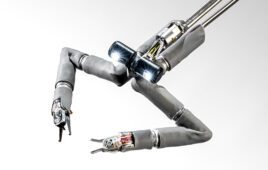Before a medical device package validation, it’s important to do your homework and understand what needs to be done.
Scott Levy, DDL

[Image courtesy of DDL]
1. Understand the regulatory requirements (FDA, EU, etc.).
In general, regulators expect you to prove that your packaging system ensures sterility maintenance of that device and to confirm the consistency of your processes.
2. Read and familiarize yourself with ISO 11607 so you understand your validation responsibilities.
To obtain a CE Mark for marketing your medical device in the EU, you must comply with ISO 11607. The FDA also recognizes ISO 11607 as a consensus standard, so if you are in conformance with it for your CE Mark, you will have a much easier time complying with the FDA.
3. Get your package professionals involved upfront in the product design process.
Packaging professionals should be working with colleagues in regulatory, product development, and quality as early as possible during medical device development. Also, during product design verification, conduct feasibility testing to understand the product and package interactions.
4. Perform a risk assessment of the medical device you are packaging.
Determine the specified attribute data for your package, identify all potential failure modes that could cause (or result from) an out-of-specification package, and then determine the sample size needed to catch those failures. The chosen sample size and resulting confidence level will depend upon the overall risk assessment (Failure Mode Effects Analysis; FMEA) that the medical device manufacturer puts in place for any given device.
5. Talk to your suppliers and service providers.
Your vendors have a lot of knowledge. Get as much data as possible from material providers, thermoformers, package converters, and machinery providers. Finally, work with a qualified and knowledgeable test laboratory that understands the regulatory requirements and can further guide you to assure you meet specific regulatory requirements.
6. Write your packaging protocol and establish clear acceptance criteria.
Your protocol should have the following: a purpose, a scope, a reference section listing all standards and test procedures, descriptions of all materials and equipment, all attribute data, a sequence of events or a flow chart of what will transpire, and a summary of the chosen sample size and acceptance criteria. It is important to document everything, as the protocol can help you manage your processes with outside vendors.
7. Know your worst cases.
Review your product families to define all worst-case scenarios. It is a hard question to answer, but you are looking for what potentially can cause the most adverse effects to the package.
8. Understand the differences between package seal strength and whole package integrity
You cannot solely test packages for seal strength, as you also need to test for whole package integrity, using a method such as ASTM F2096 (Standard Test Method for Detecting Gross Leaks in Packaging by Internal Pressurization [Bubble Test]). You should also consider the microbial barrier properties of the materials selected for their sterile barrier system.
Stability testing and package performance are also important. Stability testing looks at the effects of aging on seal strength and package integrity and helps you determine a shelf life, whereas performance testing looks at the effects of handling and distribution on seal strength and package integrity. Separating these evaluations allows you to identify the causes of seal failure or compromised integrity.
9. Do a gap analysis of the test standards that you have previously utilized versus what is current.
When any new standard is released, do a gap analysis to address if the new standard affects an older validation and if you are still in compliance. A gap analysis is also necessary if there is a change in packaging materials or processes.
10. Make sound technical science-based justifications if needed.
If making a justification, you need to take a look at all factors for a particular justification and make it science based and defendable. Too many times, organizations are trying to meet a timeline and utilize loose justifications in order to meet that timeline. When in doubt, leverage your supplier’s knowledge as a sounding board.
In the end, medical device professionals need to understand what they are putting into packages. If you do your homework with materials and processes and understand what you need to do before validation, you will build a successful validation program.
Scott Levy is the lead packaging engineer at DDL, a third-party testing laboratory that serves the medical device industry. With over 24 years of testing experience, Levy specializes in helping medical device manufactures comply with ISO 11607 and other industry standards.





Good basic overview but the article totally overlooked human factors validation testing. According to FDA HFE Guidance package design is a component of labeling and must be subjected to human factors validation testing. Such testing covers a series of human factors and ergonomic issues including label comprehension and decision-making, package opening procedure and conspicuity and package opening forces and possible damage to internal contents/device. Such testing must be executed by an independent professional HFE testing firm and adhere to HFE testing best practices. In our work over the past 40 years, we have seen package design solutions pass all engineering and production criteria and fail human factors validation.
Charles L. Mauro CHFP
President / Founder
MAURO Usability Science (founded 1975)
Cmauro@MauroUsabilityScience.Com